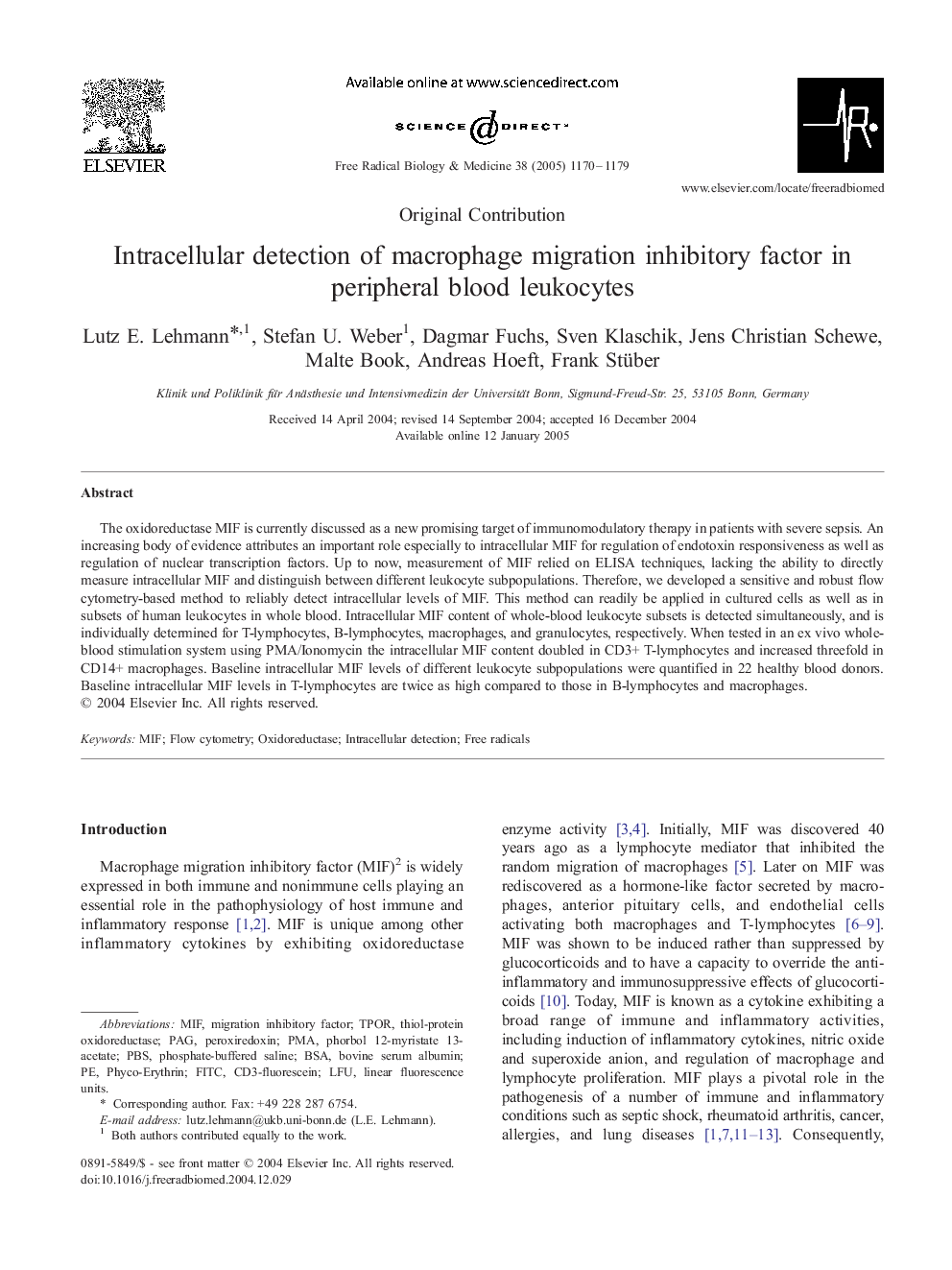| Article ID | Journal | Published Year | Pages | File Type |
|---|---|---|---|---|
| 10738872 | Free Radical Biology and Medicine | 2005 | 10 Pages |
Abstract
The oxidoreductase MIF is currently discussed as a new promising target of immunomodulatory therapy in patients with severe sepsis. An increasing body of evidence attributes an important role especially to intracellular MIF for regulation of endotoxin responsiveness as well as regulation of nuclear transcription factors. Up to now, measurement of MIF relied on ELISA techniques, lacking the ability to directly measure intracellular MIF and distinguish between different leukocyte subpopulations. Therefore, we developed a sensitive and robust flow cytometry-based method to reliably detect intracellular levels of MIF. This method can readily be applied in cultured cells as well as in subsets of human leukocytes in whole blood. Intracellular MIF content of whole-blood leukocyte subsets is detected simultaneously, and is individually determined for T-lymphocytes, B-lymphocytes, macrophages, and granulocytes, respectively. When tested in an ex vivo whole-blood stimulation system using PMA/Ionomycin the intracellular MIF content doubled in CD3+ T-lymphocytes and increased threefold in CD14+ macrophages. Baseline intracellular MIF levels of different leukocyte subpopulations were quantified in 22 healthy blood donors. Baseline intracellular MIF levels in T-lymphocytes are twice as high compared to those in B-lymphocytes and macrophages.
Keywords
Related Topics
Life Sciences
Biochemistry, Genetics and Molecular Biology
Ageing
Authors
Lutz E. Lehmann, Stefan U. Weber, Dagmar Fuchs, Sven Klaschik, Jens Christian Schewe, Malte Book, Andreas Hoeft, Frank Stüber,
